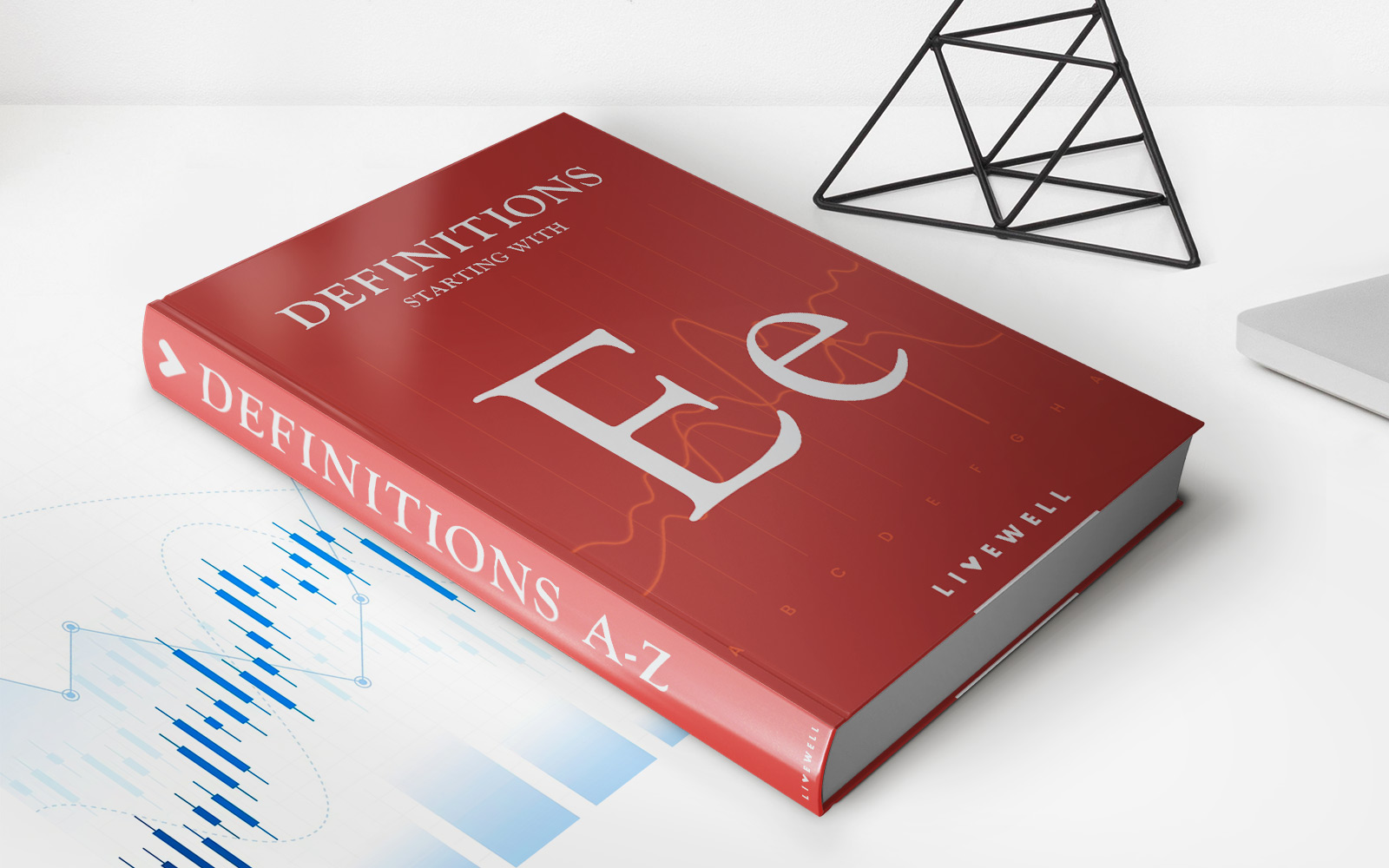

Finance
How Much Liquid Assets Can I Have For Medicaid
Modified: January 15, 2024
Find out how much liquid assets you can have for Medicaid with our helpful finance guide. Understand the limits and requirements to qualify for assistance.
(Many of the links in this article redirect to a specific reviewed product. Your purchase of these products through affiliate links helps to generate commission for LiveWell, at no extra cost. Learn more)
Table of Contents
- Introduction
- Understanding Medicaid and Liquid Assets
- Medicaid Eligibility Criteria
- Determining Countable Liquid Assets
- Exempt Liquid Assets
- Maximum Liquid Asset Limits for Medicaid
- Consequences of Exceeding Liquid Asset Limits
- Strategies for Reducing Liquid Assets
- Seek Professional Assistance for Medicaid Planning
- Conclusion
Introduction
Navigating the world of healthcare and government assistance programs can be overwhelming, especially when it comes to understanding Medicaid and its various requirements. One important aspect of Medicaid eligibility is the amount of liquid assets that an individual is allowed to have. Liquid assets refer to the cash or anything that can easily be converted into cash, such as bank accounts, stocks, and bonds.
This article aims to shed light on the topic of liquid assets and Medicaid, providing valuable information on the maximum limits for liquid assets and the consequences of exceeding these limits. We will also explore strategies for reducing liquid assets while still retaining financial security. It’s important to note that Medicaid rules and regulations may vary from state to state, so it’s essential to consult with a qualified Medicaid planning professional or research the specific guidelines in your state.
Understanding the limitations and guidelines surrounding liquid assets can help you plan and make informed decisions regarding your financial situation, ultimately allowing you to preserve your eligibility for Medicaid and receive the necessary healthcare coverage. So, let’s delve into the intricate details of Medicaid and liquid assets to empower you with the knowledge you need to navigate this complex landscape.
Understanding Medicaid and Liquid Assets
Medicaid is a government assistance program that provides healthcare coverage to low-income individuals and families. It is jointly funded by the federal and state governments and administered by individual states. Medicaid helps millions of people access essential healthcare services, including doctor visits, hospital stays, prescription medications, and long-term care.
To qualify for Medicaid, individuals must meet certain eligibility criteria, including income and asset limitations. Liquid assets are a key factor in determining eligibility. These assets are considered “countable” by Medicaid, meaning that they are included in the calculation of an individual’s financial resources.
Liquid assets include cash, bank accounts, stocks, bonds, and other financial resources that can be easily converted into cash. They do not include non-liquid assets such as a primary residence, personal belongings, and life insurance policies with a face value of $1,500 or less. Medicaid takes into account both the applicant’s assets and their spouse’s assets when determining eligibility.
The purpose of including liquid assets in Medicaid eligibility criteria is to ensure that the program is targeted towards those with limited financial resources who truly need assistance. By assessing an individual’s liquid assets, Medicaid aims to prevent individuals with substantial financial means from accessing benefits that are intended for those in need.
It’s important to note that different states have different asset limits for Medicaid eligibility. While some states have strict limits on both income and assets, others have more lenient guidelines. It’s crucial to understand the specific regulations in your state to determine your eligibility for Medicaid based on your liquid assets.
Medicaid Eligibility Criteria
To be eligible for Medicaid, individuals must meet certain criteria set by the program. These criteria vary by state but generally include income and asset limitations, as well as other requirements. Let’s take a closer look at the common eligibility criteria for Medicaid:
- Income Limit: Medicaid has income limits that vary by state, but in general, individuals must have a low income to qualify. The income limit is often based on a percentage of the Federal Poverty Level (FPL). If your income exceeds the income limit, you may not be eligible for Medicaid.
- Asset Limit: Along with income, Medicaid also considers the value of your assets. Liquid assets, as mentioned earlier, are counted towards this limit. The asset limit is typically much lower than the income limit and may vary by state. If your assets exceed the limit, you may not be eligible for Medicaid.
- Categorical Requirement: Medicaid is generally available to certain categories of individuals, such as low-income adults, children, pregnant women, elderly individuals, and people with disabilities. Each category has specific requirements that must be met to qualify for Medicaid.
- Citizenship or Immigration Status: You must be a U.S. citizen or a qualified non-citizen to be eligible for Medicaid. Non-citizens must meet specific immigration status requirements to qualify.
- Residency: Generally, you must be a resident of the state where you are applying for Medicaid. Proof of residency, such as a driver’s license or utility bill, may be required.
- Additional Requirements: Some states may have additional eligibility requirements, such as participation in work programs, certain medical conditions, or age restrictions.
It’s important to note that Medicaid eligibility rules and requirements can change over time. It’s crucial to stay updated with the latest guidelines in your state and seek professional assistance if needed to navigate the application process and determine your eligibility.
Determining Countable Liquid Assets
When determining Medicaid eligibility, it is essential to understand how countable liquid assets are calculated. Countable liquid assets are the financial resources that are taken into account when evaluating an individual’s eligibility for Medicaid. Here are some key factors to consider when determining countable liquid assets:
- Bank Accounts: All funds held in checking accounts, savings accounts, money market accounts, and certificates of deposit (CDs) are considered countable liquid assets by Medicaid. The total value of these accounts is included in the asset calculation.
- Stocks and Bonds: Any stocks, bonds, or other investment instruments that can be converted to cash are considered countable liquid assets. The current market value of these financial assets is included in the calculation.
- Retirement Accounts: Generally, retirement accounts such as 401(k) plans, IRAs, and pensions are not counted as countable liquid assets for Medicaid eligibility purposes. However, once distributions are made from the retirement account, the funds become countable income and may affect eligibility.
- Real Estate: Residential properties, including the primary home, are not counted as countable liquid assets. However, if the home has a significant value or if the individual is not living in the home, it may be subject to Medicaid estate recovery after the individual passes away.
- Business Assets: If the individual has ownership in a business, the value of the business and any related assets may be considered as countable liquid assets, depending on the state’s guidelines. It is important to consult with a Medicaid planning professional for guidance in this situation.
It’s critical to note that there are specific rules and exceptions for countable liquid assets, and these rules can vary from state to state. It is advisable to seek professional assistance to accurately determine which assets are countable and which are exempt in your specific situation.
Exempt Liquid Assets
While certain liquid assets are considered countable by Medicaid, there are also exemptions for certain assets that are excluded from the calculation of an individual’s financial resources. These exempt liquid assets are not taken into account when determining Medicaid eligibility. Here are some common examples of exempt liquid assets:
- Primary Residence: The primary residence is generally considered an exempt asset, meaning it does not count towards the Medicaid asset limit. However, there is usually an equity limit associated with the primary residence exemption. If the equity in the home exceeds a certain threshold, it may be subject to Medicaid estate recovery after the individual passes away.
- Personal Belongings: Personal belongings such as furniture, clothing, jewelry, and household items are typically exempt from Medicaid asset calculations.
- One Vehicle: In most cases, one vehicle is considered an exempt asset. There may be certain limitations on the value of the vehicle that qualifies for exemption.
- Term Life Insurance: Term life insurance policies with no cash value are generally exempt from Medicaid asset calculations.
- Prepaid Burial or Funeral Plans: Funds set aside for prepaid burial or funeral plans are often exempt as long as they meet specific state guidelines.
- Income-Producing Assets: Assets that generate income, such as rental properties or businesses, may be exempt if they are considered essential for the individual’s self-support.
It’s important to remember that every state has its own specific rules regarding exempt liquid assets. The exemptions may vary, and there could be additional exemptions based on your state’s guidelines. Consulting with a Medicaid planning professional who is familiar with the regulations in your state can help you understand which assets are exempt and how they may impact your Medicaid eligibility.
Maximum Liquid Asset Limits for Medicaid
Medicaid programs have established maximum limits on the amount of liquid assets an individual can have in order to qualify for benefits. These limits help ensure that the program is targeted towards those with limited financial resources who are most in need of assistance. The specific limits vary from state to state, so it’s crucial to understand the guidelines in your state. Here are some key points to consider regarding the maximum liquid asset limits for Medicaid:
- The asset limits for Medicaid vary widely by state. Some states may have very low limits, while others may have more generous thresholds.
- Most states have separate asset limits for individuals and married couples, with higher thresholds for married couples.
- Asset limits may differ for different categories of Medicaid eligibility, such as elderly individuals or people with disabilities.
- The asset limits often exclude certain assets, such as a primary residence and personal belongings, as mentioned in the previous section on exempt liquid assets.
- If an individual’s liquid assets exceed the maximum limit, they may not be eligible for Medicaid benefits until the assets are reduced to meet the threshold.
- It’s essential to keep in mind that eligibility for Medicaid is determined based on the value of countable liquid assets at the time of application. Any changes in asset value or transfers of assets made within a specified look-back period may impact eligibility and could result in a penalty.
To accurately determine the maximum liquid asset limits in your state and understand how they apply to your specific situation, it is highly recommended to consult with a Medicaid planning professional or research the guidelines provided by your state’s Medicaid office. These experts can assist you in navigating the complex rules and regulations to ensure that you meet the necessary asset limits for Medicaid eligibility.
Consequences of Exceeding Liquid Asset Limits
If an individual’s liquid assets exceed the maximum limits set by Medicaid, there can be significant consequences in terms of eligibility for benefits. Understanding these consequences is crucial for proper financial planning and Medicaid eligibility. Here are some potential outcomes of exceeding the liquid asset limits:
- Ineligibility for Medicaid: If an individual’s liquid assets exceed the maximum limit, they may be deemed ineligible for Medicaid benefits. This means they will not receive the healthcare coverage and assistance that Medicaid provides.
- Delay in Accessing Healthcare: Without Medicaid benefits, individuals may face significant delays in accessing necessary healthcare services. This can have a negative impact on their health and well-being, especially if they require timely medical attention.
- Self-Pay Expenses: Individuals who exceed the liquid asset limits may be required to use their own funds to pay for healthcare expenses until they each the asset threshold. This can be financially burdensome and may deplete their resources quickly.
- Medicaid Estate Recovery: If an individual has excess assets, particularly a significant amount of home equity, they may be subject to Medicaid estate recovery. This means that after their passing, Medicaid may seek reimbursement from their estate for the benefits received during their lifetime.
- Financial Strain: Exceeding the liquid asset limits can result in financial strain, as individuals would need to spend down their assets to meet the eligibility criteria. This can disrupt financial stability and compromise long-term financial planning.
To avoid these consequences, it’s important to carefully manage and plan your assets to meet the Medicaid eligibility requirements. Consulting with a Medicaid planning professional can provide valuable guidance and strategies to help navigate these potential pitfalls and ensure proper asset management.
Strategies for Reducing Liquid Assets
When it comes to Medicaid eligibility, individuals who have excessive liquid assets can employ various strategies to reduce their assets and meet the program’s requirements. These strategies can help preserve financial security while maintaining eligibility for Medicaid benefits. Here are some effective strategies for reducing liquid assets:
- Spending Down Assets: One common strategy is to spend down liquid assets by purchasing exempt items, such as necessary household goods, repairs or upgrades to the primary residence, or a reliable vehicle. This can help reduce the overall value of countable assets.
- Paying Off Debts: Another approach is to use liquid assets to pay off outstanding debts. By reducing debt, individuals can lower their overall asset value and potentially become eligible for Medicaid.
- Converting Assets: Consider converting countable liquid assets into exempt assets. For example, using excess cash to pay off a mortgage or invest in home modifications can decrease the asset value while improving the value and exemption status of the primary residence.
- Establishing Trusts: Creating certain types of trusts, such as irrevocable trusts, can allow individuals to transfer liquid assets out of their name and into the trust. This can help meet Medicaid’s asset limitations while still preserving the assets for future needs or beneficiaries.
- Purchasing Annuities: In some cases, purchasing annuities can help convert countable assets into a stream of income. Annuities can be structured to comply with Medicaid rules and provide a source of income while reducing asset value.
These strategies should be implemented carefully and within the guidelines of Medicaid rules in your state. It’s crucial to consult with a professional experienced in Medicaid planning to ensure that you follow all regulations and make informed decisions to maintain eligibility while preserving your financial well-being.
It’s important to note that Medicaid has a “look-back” period during which any asset transfers made for less than fair market value can result in a penalty period of Medicaid ineligibility. It’s crucial to plan ahead and consider these rules when implementing asset reduction strategies.
Seek Professional Assistance for Medicaid Planning
Navigating Medicaid eligibility and the complexities of asset limits can be challenging. To ensure you make informed decisions and optimize your financial situation, it is highly recommended to seek professional assistance for Medicaid planning. Medicaid planning professionals, such as attorneys or financial advisors specializing in elder law and Medicaid, can provide valuable guidance and support throughout the process. Here’s why professional assistance is crucial:
- Expertise and Knowledge: Medicaid planning professionals have in-depth knowledge of Medicaid rules, regulations, and eligibility criteria. They stay updated with any changes in the law and are well-versed in the strategies that can be employed to meet asset limits while preserving financial security.
- Personalized Guidance: Professionals can assess your individual circumstances and provide personalized guidance tailored to your specific needs. They can analyze your assets, income, and eligibility requirements to create a customized plan that maximizes your eligibility for Medicaid while protecting your financial interests.
- Asset Protection: Professionals can help you structure your assets in a way that protects them from being depleted due to healthcare costs. They can advise on strategies like trust creation, asset conversion, and gifting techniques to ensure asset preservation and long-term financial security.
- Navigating Medicaid Rules: Medicaid regulations can be complex and vary from state to state. Professionals are well-versed in these rules and can help you navigate the system effectively. They can assist with paperwork, application submission, and ensuring compliance with Medicaid requirements.
- Peace of Mind: Dealing with Medicaid rules and asset planning can be overwhelming and stressful. Seeking professional assistance can alleviate the burden by providing you with peace of mind that experts are handling the process and ensuring you make sound financial decisions.
While professional assistance may entail some costs upfront, it can result in significant savings and peace of mind in the long run. By optimizing your Medicaid eligibility and protecting your assets, you can secure healthcare coverage and financial stability for yourself and your loved ones.
When selecting a Medicaid planning professional, ensure they have experience in Medicaid planning, elder law, and a strong understanding of the laws and regulations in your specific state. Take the time to research and choose a reputable and qualified professional who can guide you through the Medicaid planning process with expertise and integrity.
Conclusion
Understanding the relationship between Medicaid and liquid assets is crucial when navigating the complexities of healthcare assistance and government programs. Medicaid eligibility criteria, including the maximum liquid asset limits, play a significant role in determining who qualifies for benefits. By having a clear understanding of these guidelines, individuals can make informed financial decisions to maintain eligibility while preserving their financial well-being.
Countable liquid assets, such as cash, bank accounts, stocks, and bonds, are taken into consideration when determining Medicaid eligibility. However, certain assets, such as a primary residence and personal belongings, may be exempt from the calculation. It is essential to be aware of the specific rules and exemptions in your state, as they can vary.
Exceeding the maximum liquid asset limits can have serious consequences, including ineligibility for Medicaid and the need to spend down assets or face Medicaid estate recovery. Therefore, it is vital to employ strategies such as spending down assets, paying off debts, or establishing trusts to reduce liquid assets while maintaining financial security.
Seeking professional assistance in Medicaid planning is highly recommended. Professionals experienced in Medicaid rules and regulations can provide personalized guidance, ensure compliance, and help protect assets. They can navigate the complexities of Medicaid planning, helping individuals make informed decisions that optimize their eligibility while ensuring long-term financial stability and peace of mind.
To ensure the best outcome, it is essential to consult with a Medicaid planning professional or conduct thorough research on the guidelines and regulations specific to your state. By doing so, you can confidently navigate the Medicaid system, manage your liquid assets effectively, and secure the necessary healthcare coverage for yourself and your loved ones.














